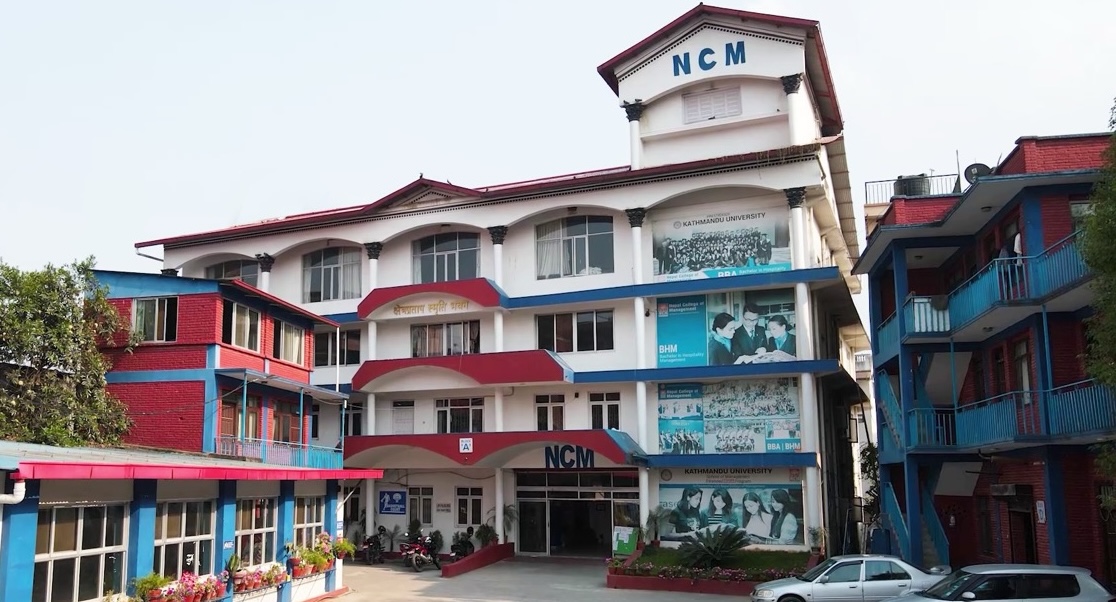
The International Research Journal of Management Science
About Us and Guideline
The International Research Journal of Management Science (IRJM), published by Nepal College of Management, Lalitpur, Nepal, is dedicated to advancing the fields of business and management through high-quality research. It aims to disseminate empirical, applied, and conceptual studies, fostering a deeper understanding of management education and business practices. The journal provides a platform for insightful research articles, theoretically robust conceptual papers, and comprehensive review papers that contribute meaningfully to the body of knowledge.
IRJM follows a rigorous double-blind peer review process, ensuring that both the authors’ and reviewers’ identities remain anonymous. Additionally, the journal offers an Online First publication feature, enabling approved articles to be published online ahead of their formal inclusion in an issue. This reduces the lead time between submission and publication. IRJM is fully integrated with the NepJOL platform, enhancing its accessibility and visibility.
Launched in 2016, the journal has published nine volumes, encompassing diverse topics such as finance, marketing, organizational behavior, human resource management, and related fields. It welcomes submissions in the form of research papers, research notes, case studies, reflective essays, and field surveys to foster original research and promote collaboration between academic and industrial partners.
The journal encourages contributions that provide unique insights into contemporary business practices, aligning with its mission to bridge the gap between academic research and practical application. Designed for researchers, scholars, management practitioners, and students worldwide, the journal serves as a platform for advancing management knowledge.
Since its inception, Dr. Prem Prasad Silwal, in collaboration with a dedicated team, has played a pivotal role in ensuring the successful publication of these volumes, showcasing a consistent commitment to scholarly excellence.
Guidelines of the Journal
The submission of a paper for the IRJMSwill be taken to entail that it represents original works not previously published, and contribution submitted for review should not have been published elsewhere. It is the responsibility of the author that the information, data, fact mentioned in paper should be accurate and correctly presented.
The articles so received have to go a double-blind peer review process and are then subject to approval by the editorial board. However, the opinions, description, analysis and views expressed in the papers are solely those of authors and do not necessarily reflects the views of the Nepal College of Management and editors.
Guidelines for writing an abstract
The abstract of an academic paper is a concise summary that provides an overview of the study's purpose, methods, key findings, implications, and originality, presented in one cohesive paragraph. It should not exceed 200 words and must include five keywords that highlight the core aspects of the research. The purpose outlines the study's objectives, addressing the research question or problem. The methods section briefly describes the approach, data collection techniques, and analytical tools used to conduct the research. The findings highlight the primary results, focusing on the significant contributions to the field. The implications section explains how the study's outcomes can be applied in practical, academic, or policy contexts, emphasizing its relevance. Lastly, originality emphasizes the unique contribution of the research, distinguishing it from existing studies. By combining these components, the abstract ensures readers grasp the essence of the paper, encouraging further exploration. Keywords should be listed in alphabetical order and crafted with engaging and precise terms that capture the essence of the research. This approach ensures clarity and accessibility, helping readers quickly identify the study's focus areas. By using catchy and relevant keywords, the research gains better visibility and resonance within its academic and practical domains.
Submission Guidelines for Articles
- To ensure a uniform and professional presentation of articles, authors are requested to adhere to the following detailed guidelines:
- Length of Submission
Articles should not exceed 10,000 words in length. Authors are encouraged to present their content concisely while maintaining clarity and depth to address the research topic comprehensively.
Language and Formatting
- Articles must be written in English.
- Use Times New Roman font, with a font size of 12 points.
- The text should be double-spaced throughout, including references, tables, and captions.
Tables and Figures:
- All tables and figures should be numbered consecutively in the order they appear in the text, using Arabic numerals (e.g., Table 1, Figure 1).
- Each table and figure should be printed on a separate sheet for clarity and easy reference.
- Ensure that letters and symbols within the tables and figures are of a comparable size for consistent readability.
- Include a descriptive material below the title of each table. This allows the table to be understood independently of the surrounding text, ensuring clarity for readers.
References:
- The number of references cited should typically not exceed 20.
- However, in exceptional cases, where the study’s scope or depth necessitates additional citations, the Editorial Board may consider articles with more than 20 references. Authors should justify the inclusion of extra references in such cases.
References should be listed alphabetically, double spaced with latest edition of APA style at the end of the paper with following format:
Silwal, P. P. (2022). Corporate cultures and financial performance: The mediating role of firm innovation. Cogent Business & Management, 9(1), 2010480. Doi: https://doi.org/10.1080/23311975.2021.2010480
Modigliani, F., & Miller, M. H. (1958). The cost of capital, corporation finance and the theory of investment. The American economic review, 48(3), 261-297.
Fama, E. F., & French, K. R. (2002). Testing trade-off and pecking order predictions about dividends and debt. The review of financial studies, 15(1), 1-33.
Sharma, A., Gautam, H., & Chaudhary, R. (2020). Red Tape and Ambidexterity in Government Units. International Journal of Public Administration, 43(8), 736-743.
The aforementioned guidelines are the basic rules for paper submission and any of the manuscript does not conform the instructions/rules may not be selected for the publication.
In summary, IRJM adheres to the guidelines outlined in the APA 7th Edition for formatting and citation. All authors are requested to ensure their manuscripts comply with these standards to maintain consistency and professionalism.
